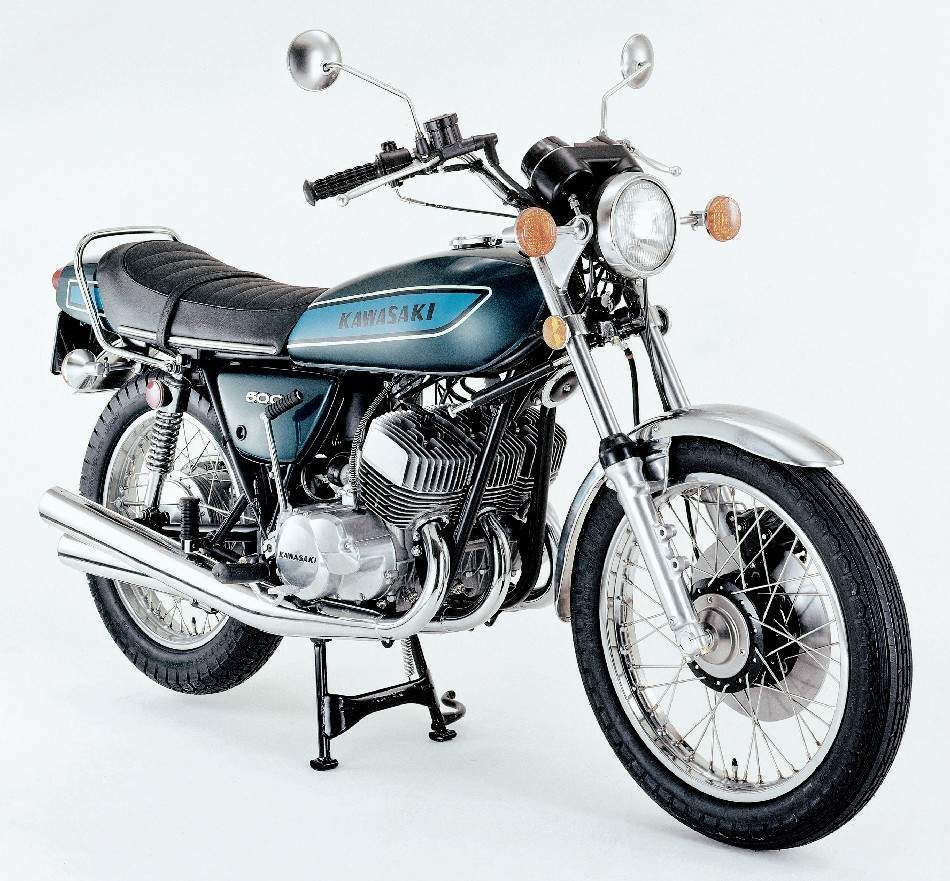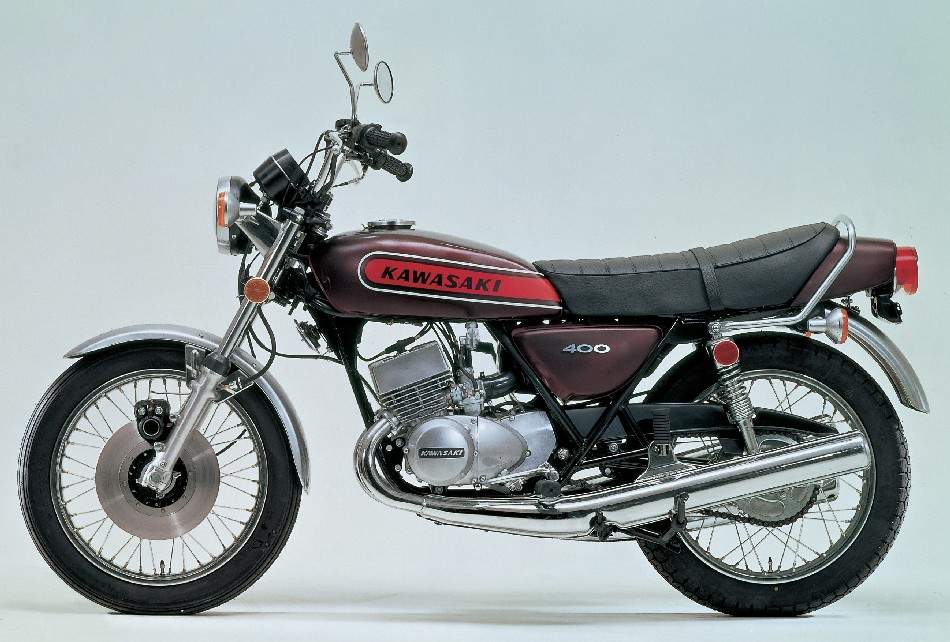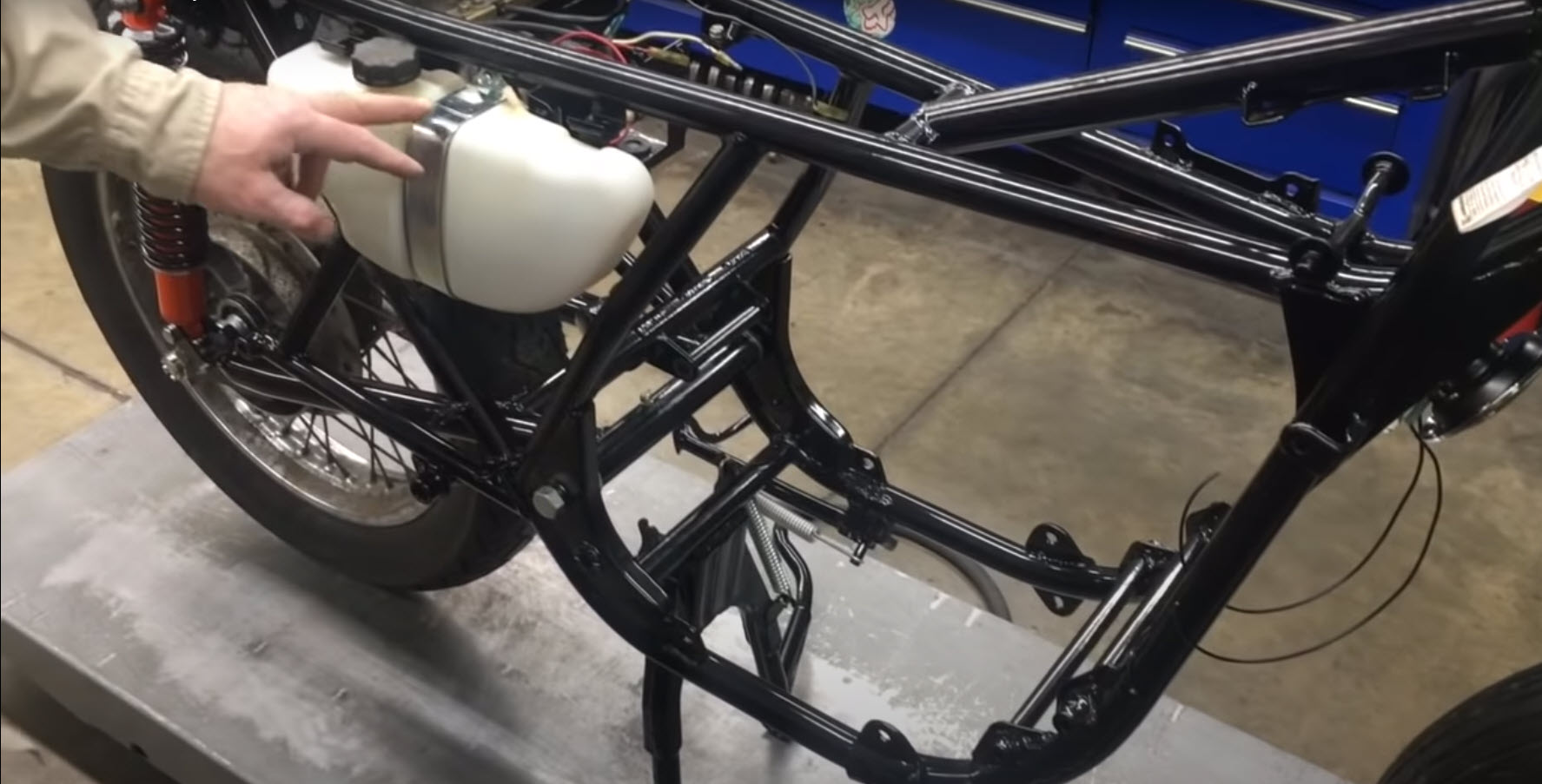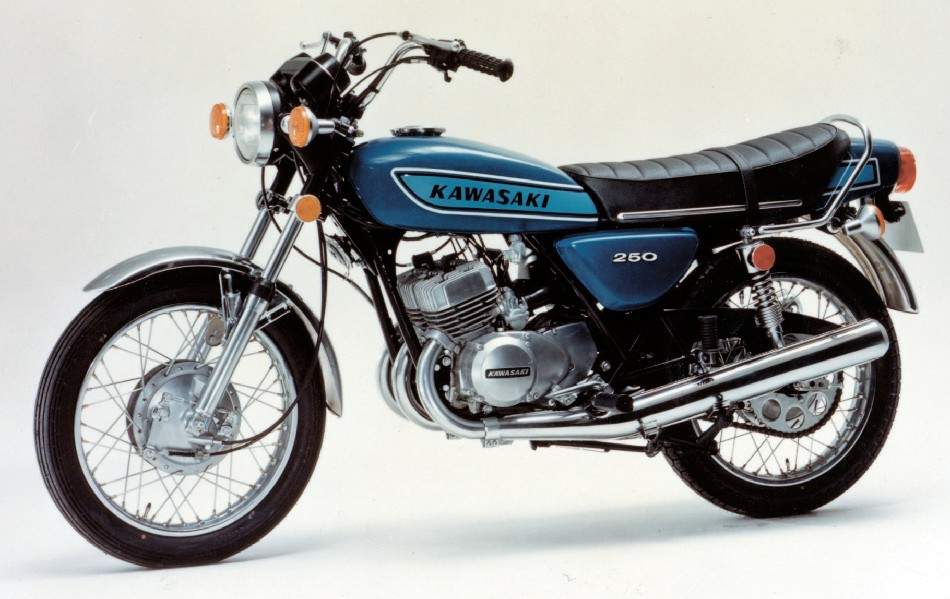After the mild success, Kawasaki experimented with its W-series and A-series, the motorcycle company aimed at the international market with high-performance motorcycles. From their efforts was born the three-cylinder design and the 500 Mach III H1 model.
The introduction of the first model of the H-series in September 1968 caused quite a fuss in the motorcycle scene, and each following model developed and enhanced the features of the previously launched one:
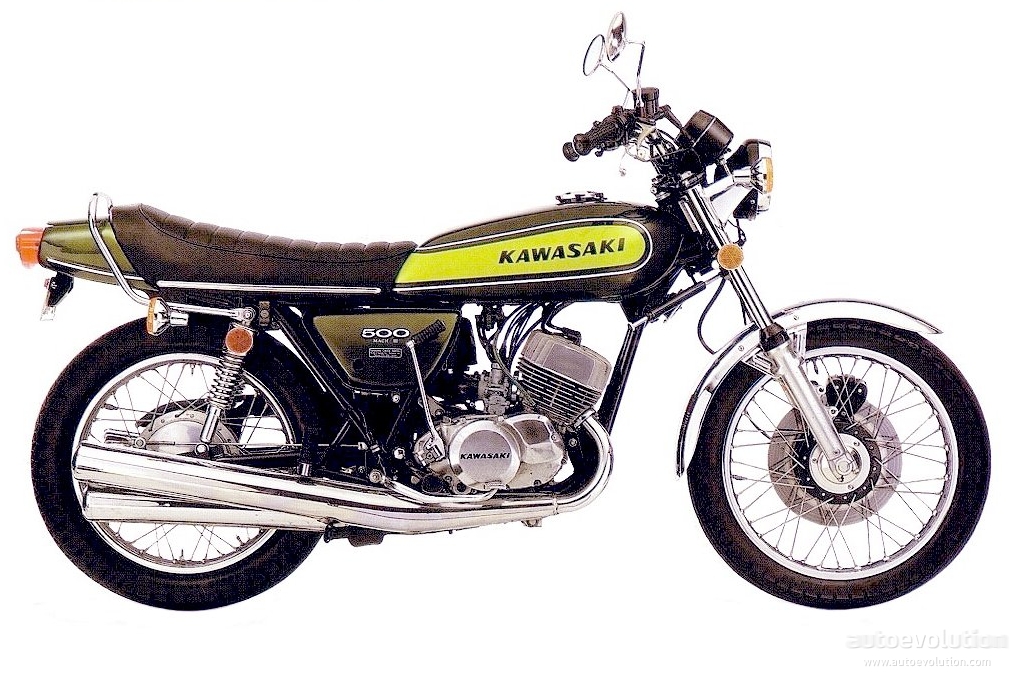
1969 MACH III H1-500
Also known as the 500SS in Japan. Its capacitor discharge ignition was fixed accompanied by a twin leading front drum brake and the front and rear fire screen were made in refined stainless steel. One of its most distinctive characteristics was the five-speed gearbox: the gears were all up with neutral at the bottom, the gear change shaft was double-ended to allow the owner to either have a right or left side gear change to appeal to the British public.
1970 H1-500
The 1970 model did not differ much from the previous one, save for a few changes in the color – which switched from Midnight White or Peacock Grey to Candy Red – and the patterns. The gold edging on the seat cover was modified to black, and the rear grab railing was faintly adjusted.
1971 H1-A
The color was substituted by Candy Blue, the fuel tank was remodeled to not rope in the prior cut out knee grips on its sides, the chain guard was varnished in black as a replacement for chrome, and the initial badge from the original Mach III H1-500 was ditched in favor of vinyl labels.
This outline was used for every 1971 Kawasaki models.
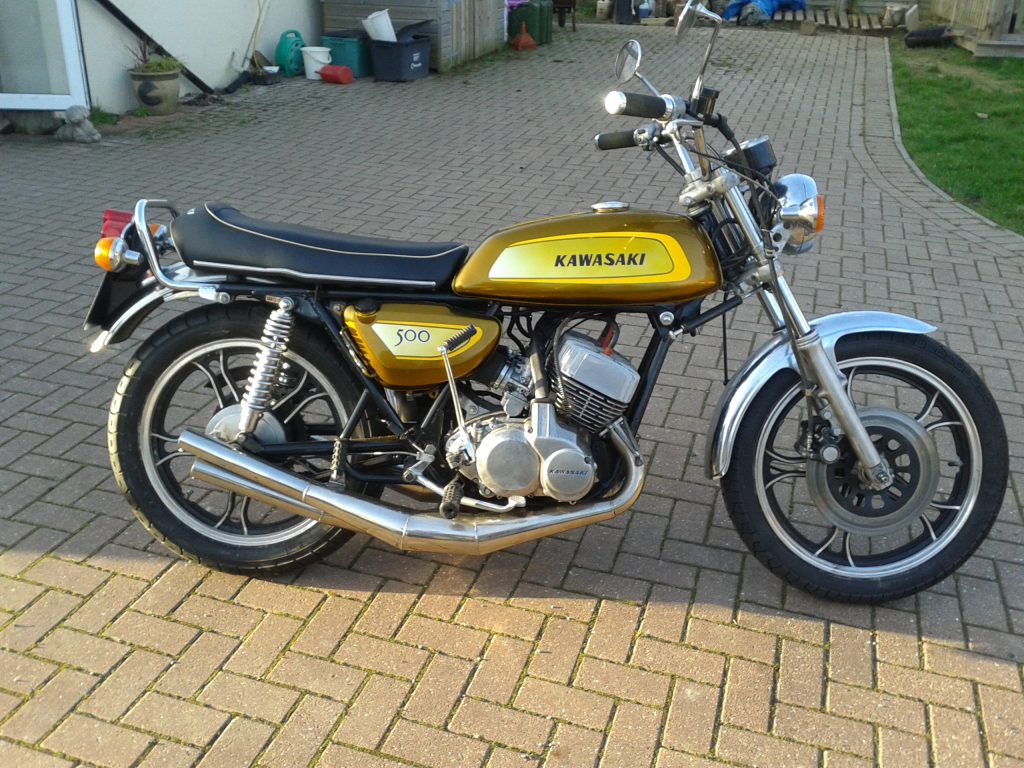
1972 H1-B
This was the first time the currently famous striped pattern was shown, in a Pearl Candy Orange presentation at the time.
The gas lid was a chrome-colored, bolting type and the seat cover was textured instead of plain. The front and rear fire screens were color-matched to the rest of the paintwork, and the shape of the tail light lens was reformed.
Along with the former minor changes, a sole disk brake was fixed at the front and the frontage handlebar controls, forks, clocks, indicators, and footrests were restyled; the rear brake panel was polished in black as well as the external engine cases, and a hydraulic steering damper was added to the preceding friction unit for perfecting the handling.
In an attempt to diminish the noise, the mufflers, baffles, and air cleaner systems were also corrected.
1972/1973 H1-C
Officially there was no H1-C but there was an H1-B with a front drum brake and a white paint job, some samples came with a disk brake and some with a drum brake. There were also accounts of a red H1-B and an H1-A with a disk brake.
1973 H1-D
This enclosed a major alteration in Kawasaki’s design; the color options were a Candy Lime green or a darker Candy Green. More or less everything was reformed on the H1-D except the engine: the CDI system from the H2 model was added and the exhausts and air cleaner system were once more changed to increase social appropriateness, the exhausts were modified into a one-piece affair with no linking elastic in the middle of the downpipe and silencer, the skeleton, chair, fire screens, instruments, rear shocks, and electrics were significantly altered and the two steering dampers were released with an improved hydraulic item being presented as a choice. In general, the silhouette of the H1-D became the foundation for all the triples in the Kawasaki range for the years to come until their exit from the market.
1974 H1-E
The H1-E was available in two colors: Candy Green or Candy Red. The CDI system was modified yet again and check valves were put into the front of the crankcases, the apparatus was enhanced to be latex attached using a series of neoprene clad bushes, and the mufflers, seat, handlebars controls, instruments, and side panel insignia were changed in the same way as the rear shocks and footrests.
Nowadays, the green H1-E gives the impression to be the most popular with riders and restorers from around the world.
1975 H1-F
The H1-F was presented in Candy Sky Blue and Candy Brown but, save for the divergent colors very, few differences were presented on this model in comparison to the former ones. A sticky label was attached to the end piece and the form of the tank label was also restyled. The side panel signs were varnished in white as a substitute for chrome and the footstools were reformed once more. Minor changes also included the controls and instruments and considering how subtle the modifications were, many tend to confuse the H1-E with the H1-F.

